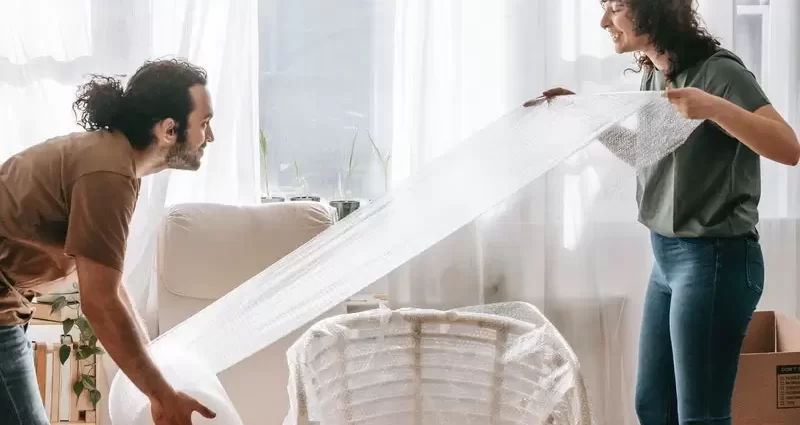The biggest threat during removals and storage is unexpected temperature changes. In non-climate-controlled spaces, temperatures fluctuate wildly depending on the weather outside. These rapid changes put stress on belongings. Wood furniture and antiques are particularly vulnerable. Rapid temperature changes cause wood to swell and contract, which leads to cracking and warping. The glues holding antiques together also fail. Climate control prevents these items from becoming damaged by keeping temperatures steady. In hot temperatures, plastics, rubber, and vinyl items warp or melt. Things like plastic totes and vinyl records need climate monitoring to keep their shape. Frozen pipes are another concern in frigid temperatures. Climate control eliminates worries about items getting too hot or cold.
Managing humidity
Along with temperature, humidity is a major factor in storage damage. Too much moisture causes rust, mold growth, swelling, and other problems. The lack of humidity dries things out and makes them brittle. Climate monitoring tracks humidity and keeps it within an acceptable range. It protects metal tools and equipment from rusting. Books, photos, paintings, and other paper items stay safe from mold damage and brittleness. Wood furniture and instruments are also safeguarded. Managing humidity prevents warping, cracking, and sticking with these wood items. Climate control saves customers from serious restoration work or total losses.
Saving energy
Climate control does use extra electricity for the climate systems. However, storage facilities employ several strategies to reduce energy consumption. For example:
- Insulating walls, ceilings, and floors to hold in cooled/heated air
- Using economical LED lights
- Installing high-efficiency HVAC systems
- Having occupants open unit doors briefly when moving items
- Utilizing motion sensors for lighting
- Setting reasonable temperature ranges (e.g. 60-80°F)
With smart design and operation, climate-controlled spaces don’t have to waste energy. The benefits for stored goods far outweigh extra utility costs.
Specialized uses
Climate monitoring is crucial for removal and storage certain specialized items. For example, wine collections require cool, steady temperatures around 55°F along with 70% humidity. Artwork, musical instruments, film reels, and other sensitive objects also need strict climate specifications. Precision temperature and humidity control are also vital for companies storing pharmaceuticals, chemicals, electronics, and other products. Climate changes ruin these inventories. Regulated conditions preserve freshness and potency.
Some businesses need refrigerated or freezer storage space. Food industries, medical companies, florists, and other clients rely on chilling or sub-zero temperatures. Climate systems tailor conditions to each occupant’s needs.
Cutting losses
The bottom line is that climate control reduces losses for removals and storage customers. Items stay protected from mold, rust, cracking, warping, and other damage. Owners aren’t faced with costly repairs or total write-offs. Proper conditions also help retain the value of belongings. Antiques, instruments, art, and collectibles hold their worth when kept in regulated storage. Customers sell or utilize assets rather than lose money on deteriorated goods. Look for a storage provider that offers specialized options for climate-sensitive belongings. For example:
- Wine locker rooms with ideal wine preservation conditions
- Art storage with strict humidity/temperature controls
- Refrigerated and freezer rooms for food, medical items, etc.
- Dehumidified spaces to protect metals, books, film reels, etc.
The best facilities have cutting-edge sensor systems to pinpoint conditions throughout the space. Occupants get access to real-time climate readouts. State-of-the-art HVAC equipment delivers precise management 24/7.

